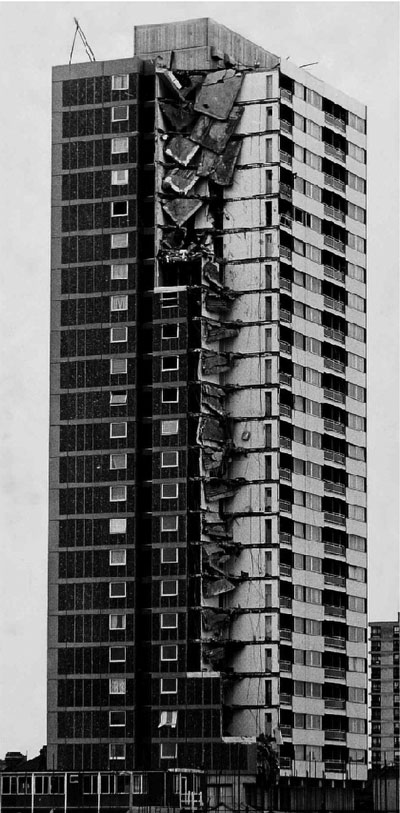News
Collapse rules progress to a higher level
Design to resist disproportionate collapse became more complex last month as a new Building Regulation came into effect.
Regulation A3 and Approved Document A, which came into force on 1 December, remove the blanket exemption for buildings of four storeys or less.
And buildings of more than 15 storeys or 5000m² must undergo a risk assessment taking into account both ‘normal’ and ‘abnormal’ hazards.
Rules on disproportionate collapse were introduced to prevent incidents like the 1968 Ronan Point disaster, in which the removal of one wall by a gas explosion led the corner of the building to fail progressively over the whole 23 storeys.
Under the new regulations buildings are divided into four classes by Table 11, which sets out the extent of horizontal and vertical ties needed according to size and occupancy.
For Class 3, the most onerous category, ‘a systematic risk assessment of the building should be undertaken taking into account all the normal hazards that may reasonably be foreseen, together with any abnormal hazards’
Charles King, SCI Senior Manager for Standards, said designers should not be misled into thinking that buildings needed to be designed to meet every eventuality, however unlikely – such as being hit by a meteorite. The approved document only gives guidance, he said. “The reg itself is very simple, and that’s what you’re obliged to fulfil.”
The regulation says only that ‘the building shall be constructed so that in the event of an accident it will not suffer collapse to an extent disproportionate to the cause’.
A judgement would have to be made on what is disproportionate in the case of rare or highly unlikely events. Mr King said: “It’s not very clear, and the designer will have to rely on a sense of reasonableness.”
The approved document also stresses that the structural form and concept should be taken into account, something often overlooked. “If you have a concert hall supported on three columns and a train takes one out then you could have a calamity, whereas if it stood on 30 columns you might be able to take out 10 without a disaster occurring,” Mr King said. “You could spend weeks doing statistical analysis of improbable events, but it’s better to use a form that’s inherently insensitive to having elements knocked out.”











